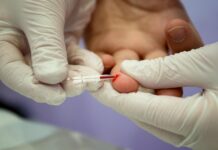NEW DELHI: The Union Health Ministry has suspended the rules governing a law which imposes a blanket ban on prenatal sex determination for over two months, a move which is being widely criticised for its future consequences and possibility of spike in sex-selective abortions in the country.
In a notification issued on April 4, the Health Ministry had pressed hold on rules under the Prenatal Diagnostic Techniques (Prohibition of Sex Selection) Rules, 1996, until June 30 in the wake of the coronavirus pandemic.
The rules, which have now been relaxed, envisage ultrasound clinics to maintain and submit detailed records of pregnant women who undergo fetal scans to the local health authorities.
In the absence of the rules, many fear that it could lead to undocumented misuse by clinic owners as well as parents.
According to Anjana Singh, who’s employed with the Fortis Hospital in Noida, “Those who were conducting sex-selective abortions will do it fearlessly no matter what the instructions are. As far as other doctors are concerned, we all are still going to maintain the record even if the government doesn’t want it.”
The medical fraternity has asserted that the move will not result in increase in unprecedented number of abortions or female feticide, but politicians and social activists are still fearful.
Kavita Krishnan, who is the secretary of the All India Progressive Women’s Association, condemned the relaxation of regulations and said, “The relaxation will give licence to sex-selective abortions due to which sex ratio will suffer immensely.”
CPI (M) politbureau member Brinda Karat also raised concerns over the suspension of the provisions under the act and asserted that it could be misused by unscrupulous sections to conduct illegal sex determination tests freely.
As per the data provided by the government in 2018, sex-selective abortion led to skewed sex ratios at birth and beyond, leading to estimates of 63 million “missing” women.
The data added that more than 2 million women go missing across age groups every year.







